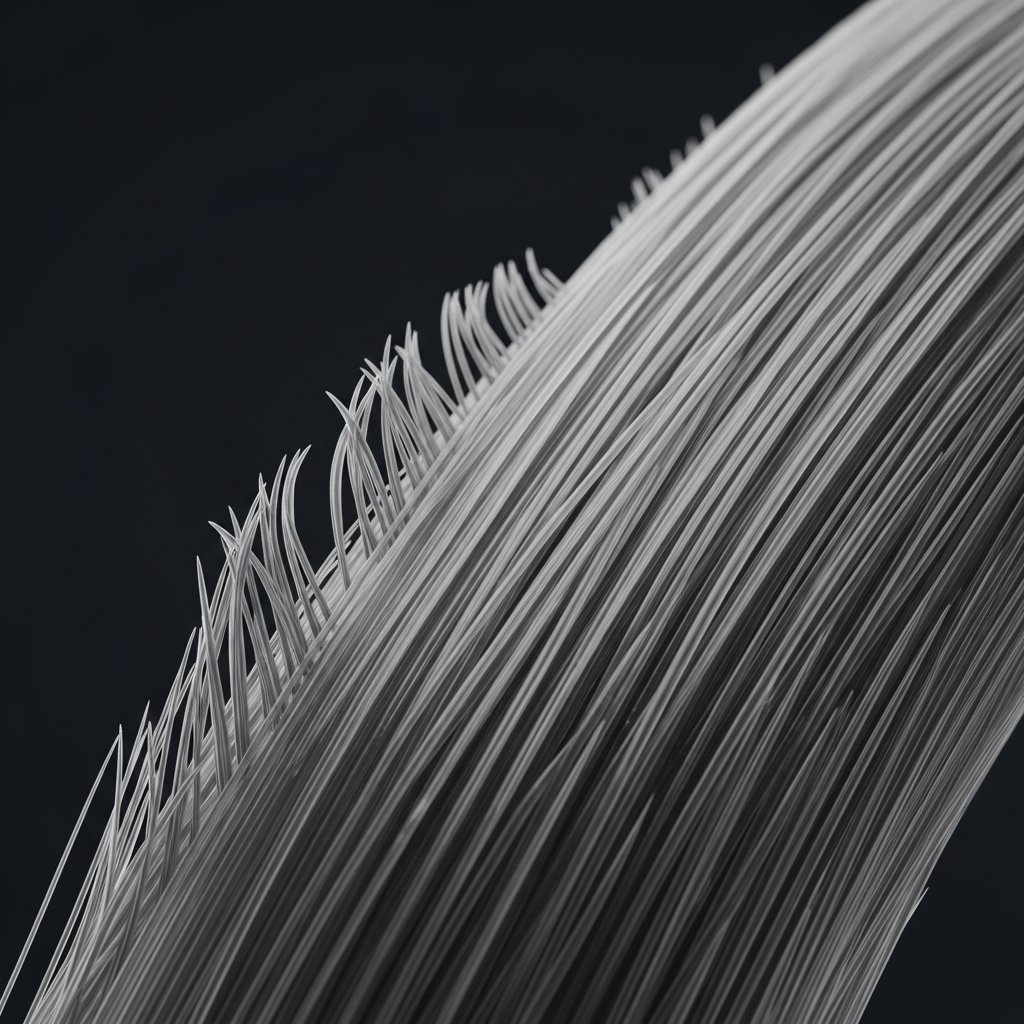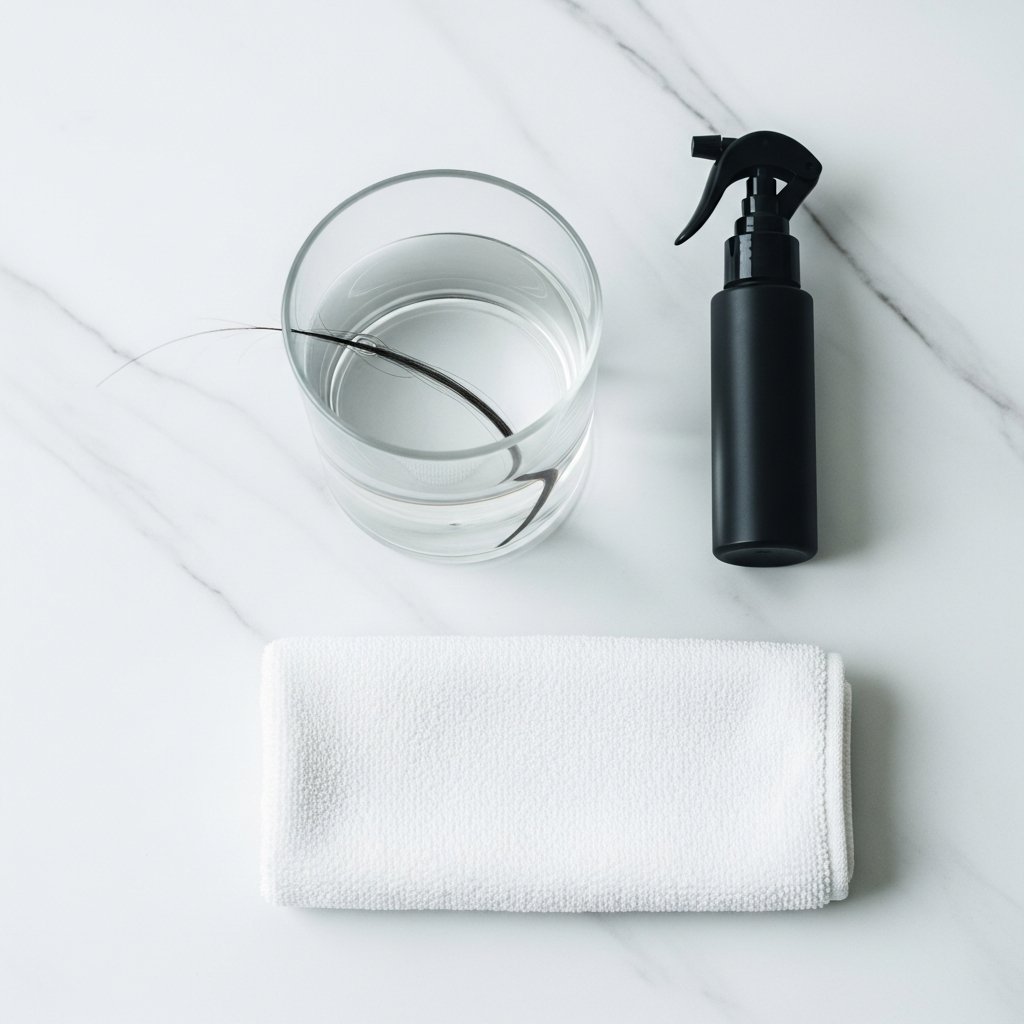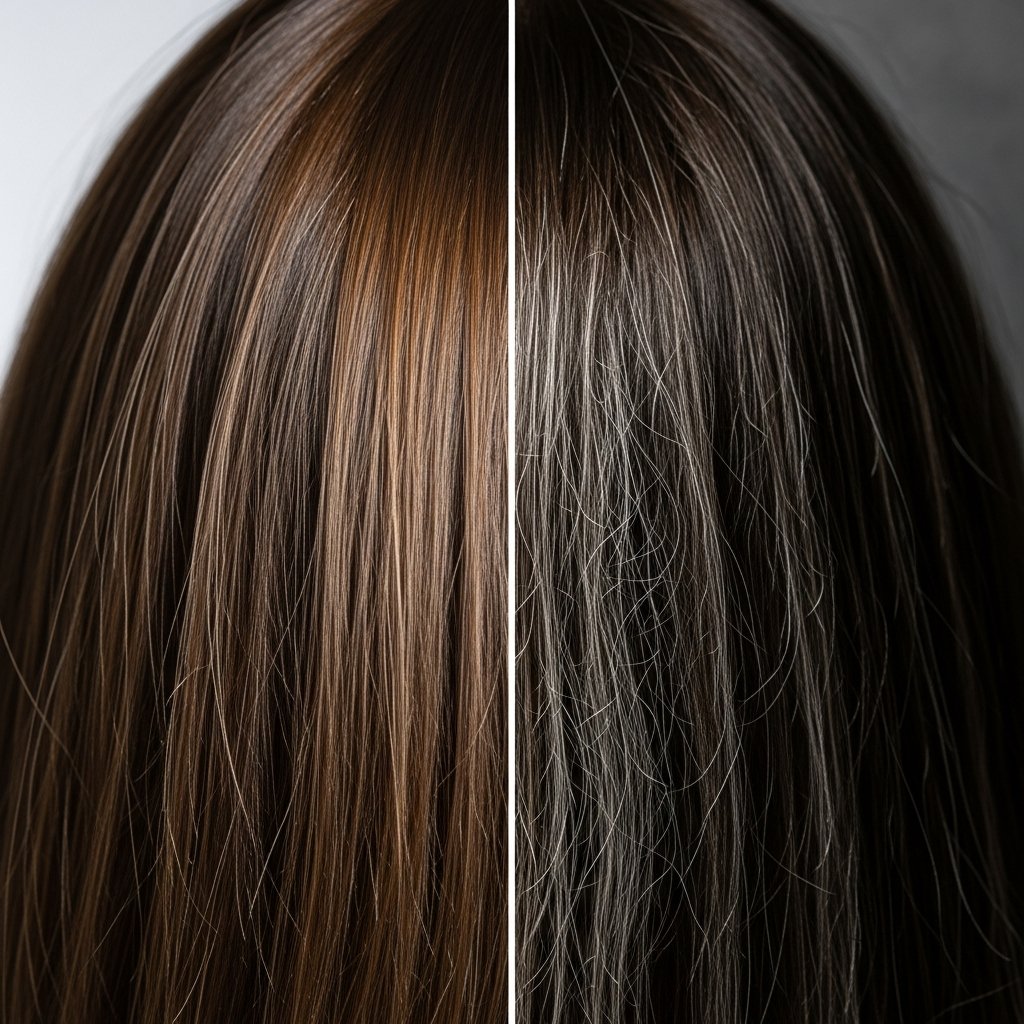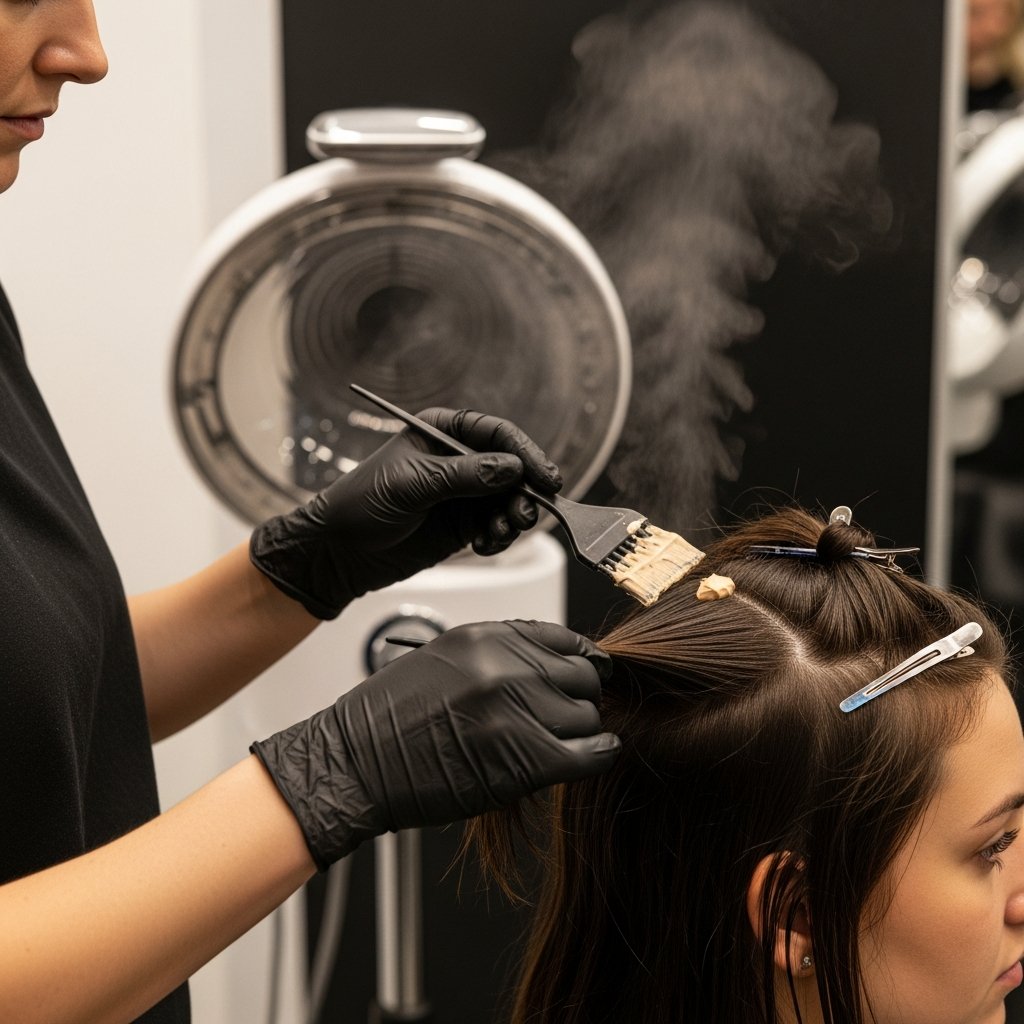
How to Grow Out Bangs Gracefully: Styling Tips for Every Stage | The Ultimate Hair Guide
11 min read

11 min read

10 min read

9 min read

14 min read

12 min read

14 min read
Have you ever followed a hair tutorial to the letter, using the exact same products as the influencer, only to end up with results that are greasy, frizzy, or just plain limp? The culprit might not be the product, but a fundamental characteristic of your hair you may not even know about: hair porosity. Understanding your hair porosity is the single most transformative piece of knowledge you can have in your hair care arsenal. It dictates how your hair absorbs and retains moisture, which in turn determines which products will make your hair thrive and which will fall flat.

This comprehensive guide will demystify the science behind hair porosity, providing you with simple, effective ways to test yours at home. We'll break down the unique needs of low, medium, and high porosity hair, offering tailored routines, ingredient recommendations, and professional insights. Forget the one-size-fits-all approach. By the end of this article, you'll be equipped with the knowledge to customize your regimen, stop wasting money on the wrong products, and finally unlock the secret to consistently healthy, beautiful hair. Prepare to revolutionize your routine and achieve the hair you've always dreamed of.
At its core, hair porosity is all about your hair's ability to absorb and hold onto moisture. To understand this, we need to look at the structure of a single hair strand. Each strand is composed of three layers: the medulla (the innermost core), the cortex (the middle layer containing fibrous proteins and melanin), and the cuticle (the outermost protective layer). The cuticle is the key player in hair porosity. It's made up of tiny, overlapping scales, much like the shingles on a roof.

When these cuticle scales are tightly packed and lie flat, it's difficult for water and products to penetrate the hair shaft. This is low porosity. When the cuticles are more loosely spaced or even raised and chipped, moisture can easily enter the hair shaft—but it can also escape just as easily. This is high porosity. The ideal state, medium porosity, is when the cuticles are slightly raised, allowing moisture to enter and be retained effectively. Your hair's porosity is primarily determined by genetics, but it can be significantly altered by external factors like chemical treatments, heat styling, and environmental exposure.
Understanding which category your hair falls into is a game-changer. It explains why heavy creams might just sit on your low porosity hair, making it feel greasy, while the same product could be a holy grail for high porosity hair that drinks it up instantly. It's the 'why' behind your hair's behavior, and knowing it is the first step toward giving it exactly what it needs to flourish.
Determining your hair's porosity doesn't require a lab coat or a microscope. You can get a very accurate idea using a few simple tests at home. For the most reliable results, make sure you are testing on clean, dry hair with no product in it. Shampoo and condition your hair as usual, let it air dry completely, and then proceed with one or more of these methods.

Caring for low porosity hair is all about encouraging moisture to penetrate the tightly bound cuticle without weighing the hair down. Because this hair type is prone to product buildup, the mantra is "less is more," and application techniques are crucial. The goal is to get moisture in and keep it there.

Your primary challenge is absorption. To overcome this, incorporate gentle heat and steam into your routine. When deep conditioning, use a hair steamer, a thermal heat cap, or even just a warm towel or shower cap wrapped around your head. The warmth helps to lift the hair cuticles slightly, allowing the beneficial ingredients from your conditioner to penetrate more deeply. When applying products, focus on emulsifying them with water in your hands first and apply to damp, not soaking wet, hair for better distribution. Always opt for lightweight, water-based products that won't just sit on the surface.
High porosity hair is like a sponge—it soaks up moisture with ease, but it loses it just as quickly. The primary goal for this hair type is to fill the gaps in the cuticle and then seal it all in to prevent moisture loss, combat frizz, and increase manageability. This often requires a multi-layered approach to hydration and sealing.

The LOC (Liquid, Oil, Cream) or LCO (Liquid, Cream, Oil) methods are revolutionary for high porosity hair. This involves layering products to maximize moisture retention. You start with a water-based liquid (L), like a leave-in conditioner, to hydrate. Then you follow with a cream (C) to further moisturize and condition, and finally an oil (O) or butter to seal the cuticle and lock everything in. Protein treatments are also a best friend to high porosity hair, as they help to temporarily patch the holes in the cuticle, strengthening the strand and improving its ability to retain moisture.
If you have medium porosity hair, congratulations! You've hit the hair care jackpot. This hair type has a cuticle layer that is looser than low porosity hair but not as open as high porosity hair, creating the perfect balance for moisture absorption and retention. It readily accepts and holds onto hydration, holds styles well, and takes color and chemical services predictably. The goal for medium porosity hair is simple: maintenance.

Your routine should focus on preserving this healthy balance. Avoid practices that could damage the cuticle and shift your porosity higher, like excessive heat styling or harsh chemical treatments. While your hair is generally easy-going, it's not invincible. Occasional deep conditioning treatments will keep it in prime condition, and paying attention to its protein-moisture balance is key. If your hair starts to feel brittle or overly soft, it's a sign that the balance is off, and you may need to adjust your products accordingly.
While genetics lay the foundation for your natural hair porosity, it is not a static trait. Your hair's porosity can and often does change over its lifetime due to a variety of internal and external factors. The most common cause of increased porosity is damage. Anything that physically or chemically compromises the integrity of the hair's cuticle layer can raise your porosity level, turning naturally low or medium porosity hair into high porosity hair.

While at-home care is the cornerstone of managing your hair's porosity, professional salon treatments can provide a powerful boost and targeted solutions that are difficult to replicate at home. An experienced stylist can not only accurately assess your hair's porosity but also recommend and perform treatments that can significantly improve its health, texture, and manageability. These treatments often use higher concentrations of active ingredients and professional-grade technology for deeper penetration and more lasting results.

A consultation with a professional is invaluable. They can analyze your hair strand-by-strand, discuss your hair history, and create a customized plan. For high porosity hair, a stylist might recommend a series of bond-building treatments (like Olaplex) to repair broken disulfide bonds within the hair structure, or a professional-grade protein treatment to fill in cuticle gaps more effectively. For low porosity hair, a salon-grade steam hydration treatment can infuse moisture far more efficiently than at-home methods. Glosses and glazes are another excellent salon service; they coat the hair shaft to smooth down the cuticle, adding shine and helping to seal in moisture for all porosity types.

Understanding your hair porosity is not just another trend; it's fundamental to effective hair care. It's the key that unlocks the door to a routine that truly works for you, ending the frustrating cycle of trial and error. By identifying whether you have low, medium, or high porosity hair, you can make informed decisions, select products with the right ingredients, and apply them in a way that maximizes their benefits. This knowledge empowers you to work with your hair, not against it.
Take the time to perform the tests, analyze the results, and begin tailoring your regimen. Your journey to achieving your ultimate hair goals—be it shine, moisture, strength, or definition—starts with this single, crucial piece of information. Listen to your hair, give it the specific care it's been craving, and watch it transform into its healthiest, most vibrant state.

11 min read

10 min read

9 min read